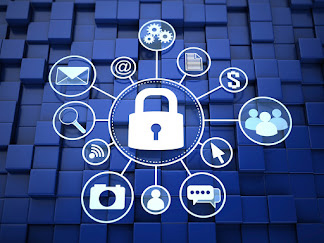10 Tips to Avoid Getting Virus Infected
When browsing the Internet, accessing social networks, emails or filling out an online form, there are a number of drawbacks that many users often encounter. Many problems that can cause the infection of a computer or information leakage are reported daily and the number of users.
When browsing the Internet, accessing social networks, emails or filling out an online form, there are a number of drawbacks that many users often encounter. Many problems that can cause the infection of a computer, smart phone or information leakage are reported daily and the number of users who see their information compromised is considerable. That is why today, we are going to review 10 tips to avoid infection of a system or device. (Antivirus Software)1. Use a secure connection
It seems simple, but many users
tend to overlook the fact that when logging into a website the connection is
through HTTPS (Hypertext Transfer Protocol Secure). When accessing a web page
using this protocol, the communication between the client and the server
travels encrypted, which increases security and minimizes the possibility of
password theft. When accessing these types of sites, you can see the difference
between accessing using HTTPS or without security over HTTP. It is possible to
configure a secure connection in social networks, so that all communication
with the site is encrypted.
2. Avoid misleading links
When emails of doubtful origin
are received, such as from a contact who speaks in Spanish, we receive an email
in Portuguese, an alleged email from a bank to update the information, email
chains about changing a free email service to payment or a billionaire who
wants to give away his money. On more than one occasion we have shared with you
the analyzes and investigations where the attackers hide the real link within a
YouTube link or another similar strategy.
3. Analyze attachments
When sending and receiving
emails, the user must take certain considerations to avoid infecting their
computer or device through attachments in emails, since repeatedly, for a
matter of time, they do not analyze the attachments in emails with a antivirus
solution and in this way the security of your information could be exposed.
4. Scan removable devices
External storage media, where USB
devices are included, are one of the malicious code propagation channels with
the highest detection rate in Latin America. By plugging a memory into an
unknown computer, users often infect their devices with malicious code, then
use it to transport work information. In this way an employee who does not
analyze your USB device could infect the entire company network.
5. Configure privacy policies on social networks
When using social networks such
as Facebook , Twitter or Google+ , users often set privacy parameters aside and
share not only their information, but also share their contact details with
anyone who accesses their profile. The configuration of privacy policies is one
of the barriers to implement to prevent an attacker from collecting user
information.
6. Use strong passwords
When creating an account on a
website, you should always use passwords that are a combination of numbers, uppercase
and lowercase letters and if possible use special characters. In this way, the
possibility of an attacker discovering the password is minimal. Studies have
shown that users often do not use strong passwords to access their accounts on
the Internet, which presents a gateway for attackers. Some examples of strong
keys are "Jos33ntr @", "C0ntr @ z3n @ #", "Jp3t?
Xi9-",: "4ApEKzqK" or "L @ # nt67nx"
7. Update programs and operating system
Both the different operating
systems (Windows, Mac OS, or the different GNU Linux distributions) and the
applications that can be installed on them (web browsers, office applications,
video players, design programs, etc.), have updates that solve various problems
that could lead to computer infection. When a user does not install these
updates, they leave their system vulnerable to a possible infection with
malicious code that turns their computer into part of a network of zombie
computers, known as a botnet.
8. Find information safely
When trying to access information
through search engines such as Google, Bing or Yahoo!, the user could be a
victim of Black-Hat SEO and linked to a bogus page from where they could
download a fake security solution or other malicious code. These methodologies
for spreading malware use events of worldwide repercussion to attract the
attention of users when trying to get the latest news.
9. Use a security solution
The use of an antivirus solution
with proactive detection capacity allows the computer to be protected in real
time against the infection of malicious code, detecting its presence before it
infects the computer and may compromise the security of the information hosted
on it. In addition, there are also tools such as firewalls and antispam to
increase computer protection.
10. Take care of the information in public places
With the massive use of
smartphones, notebooks and tablets, users usually connect to whatever network
they find available, without taking into account the risks that this may imply
for their information. When a user decides to connect to a wireless network,
from a cafeteria or others, they must pay attention to its security and it is
recommended not to access sites such as electronic banking, since an attacker
could be analyzing the network traffic and stealing your information.




Comments
Post a Comment